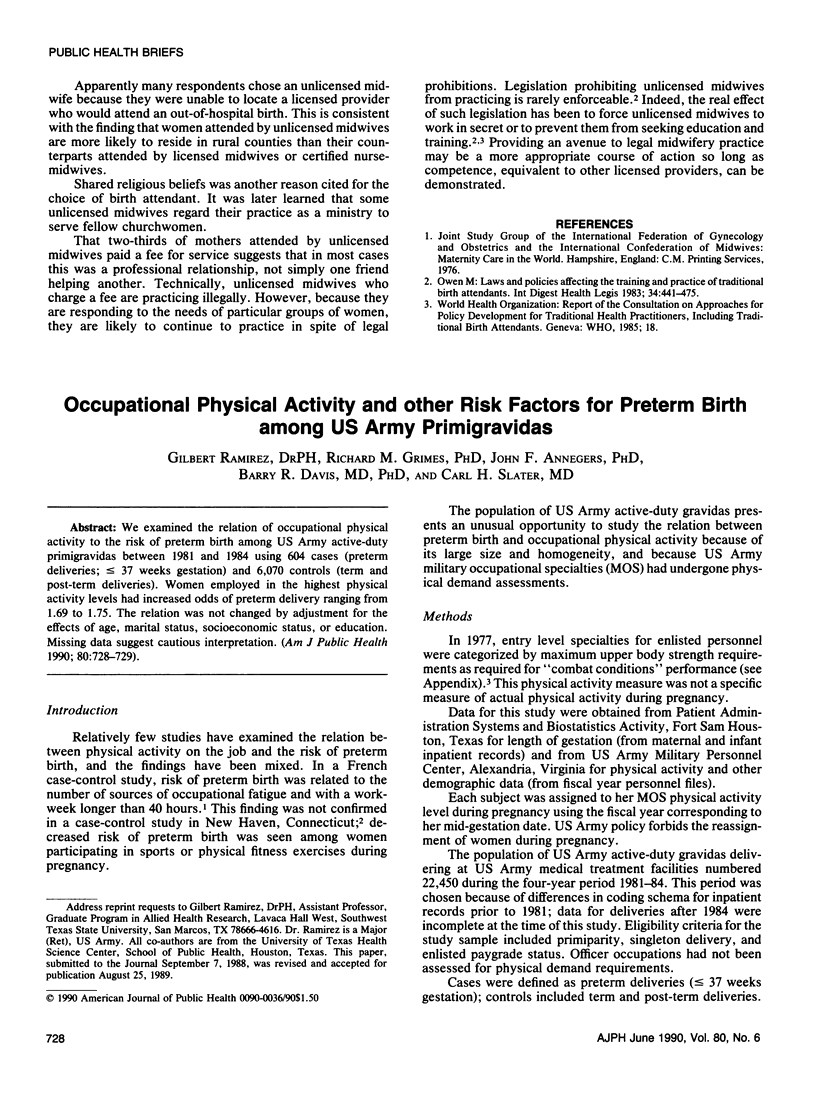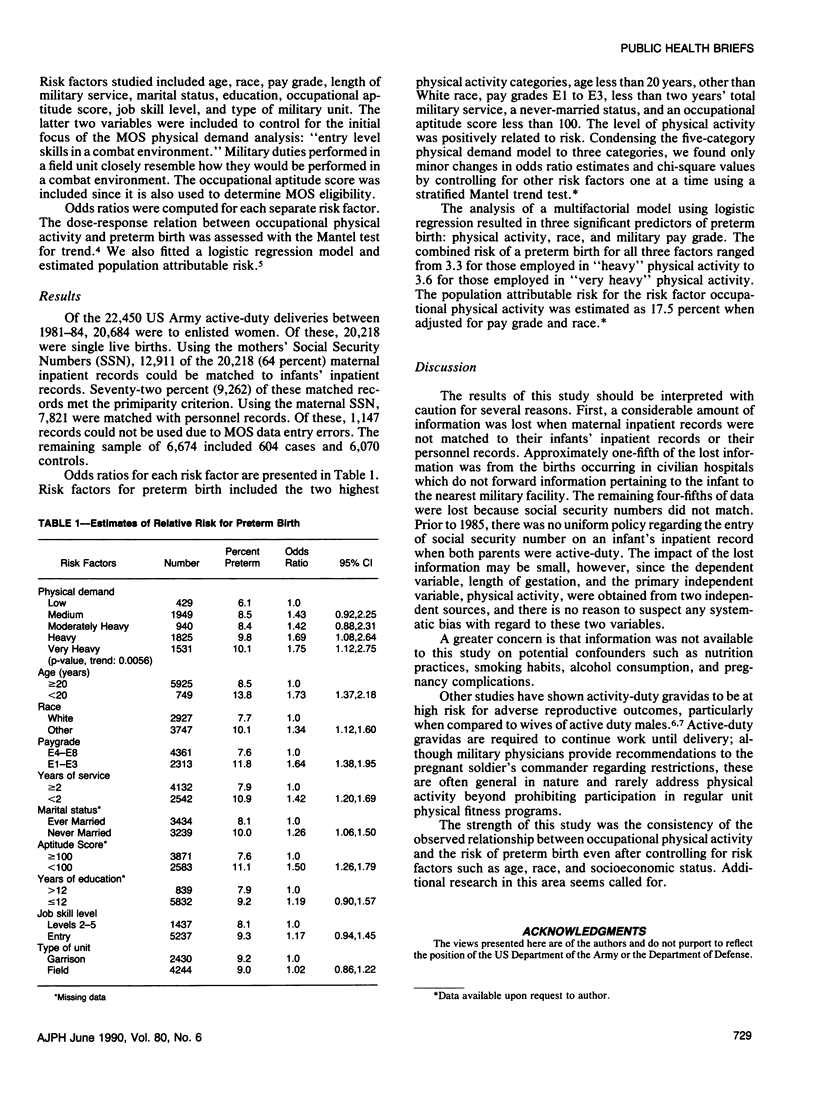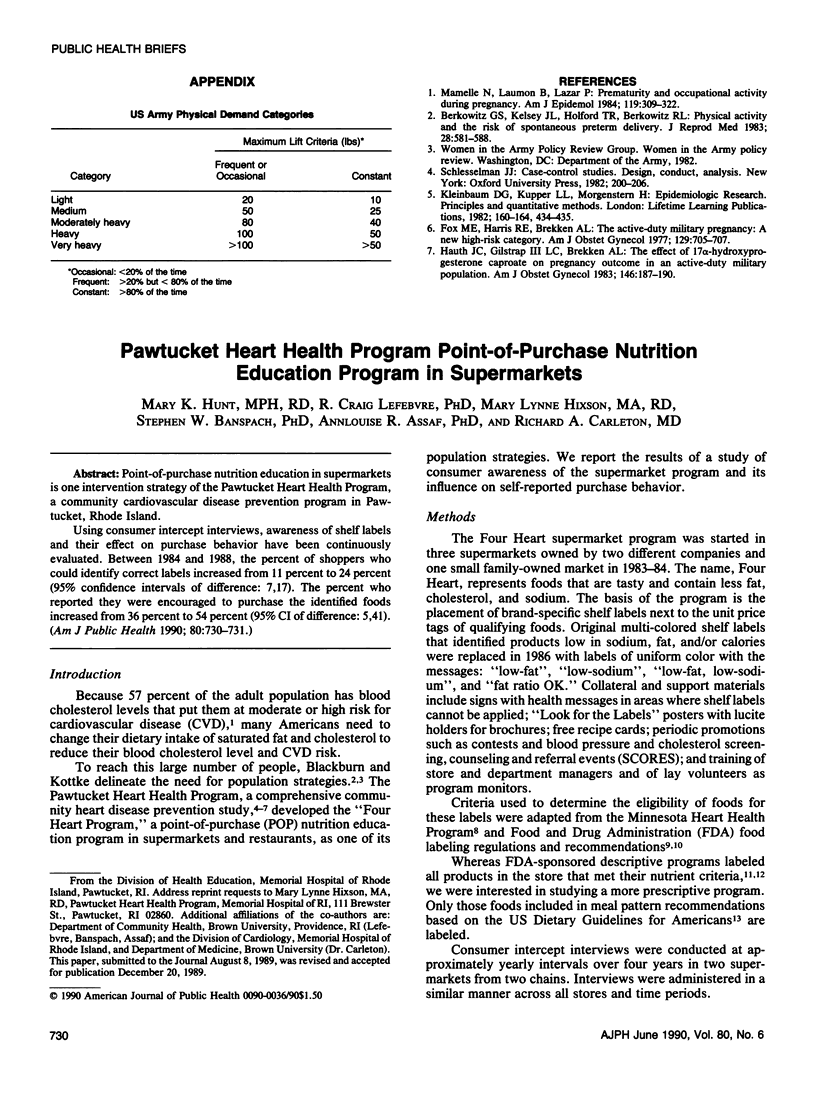Abstract
We examined the relation of occupational physical activity to the risk of preterm birth among US Army active-duty primigravidas between 1981 and 1984 using 604 cases (preterm deliveries; less than or equal to 37 weeks gestation) and 6,070 controls (term and post-term deliveries). Women employed in the highest physical activity levels had increased odds of preterm delivery ranging from 1.69 to 1.75. The relation was not changed by adjustment for the effects of age, marital status, socioeconomic status, or education. Missing data suggest cautious interpretation.
Full text
PDF


Selected References
These references are in PubMed. This may not be the complete list of references from this article.
- Berkowitz G. S., Kelsey J. L., Holford T. R., Berkowitz R. L. Physical activity and the risk of spontaneous preterm delivery. J Reprod Med. 1983 Sep;28(9):581–588. [PubMed] [Google Scholar]
- Fox M. E., Harris R. E., Brekken A. L. The active-duty military pregnancy: a new high-risk category. Am J Obstet Gynecol. 1977 Nov 15;129(6):705–707. doi: 10.1016/0002-9378(77)90662-7. [DOI] [PubMed] [Google Scholar]
- Hauth J. C., Gilstrap L. C., 3rd, Brekken A. L., Hauth J. M. The effect of 17 alpha-hydroxyprogesterone caproate on pregnancy outcome in an active-duty military population. Am J Obstet Gynecol. 1983 May 15;146(2):187–190. doi: 10.1016/0002-9378(83)91051-7. [DOI] [PubMed] [Google Scholar]
- Mamelle N., Laumon B., Lazar P. Prematurity and occupational activity during pregnancy. Am J Epidemiol. 1984 Mar;119(3):309–322. doi: 10.1093/oxfordjournals.aje.a113750. [DOI] [PubMed] [Google Scholar]


